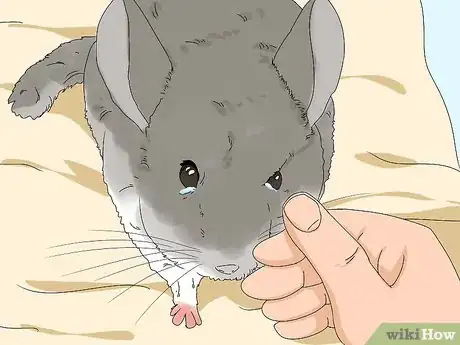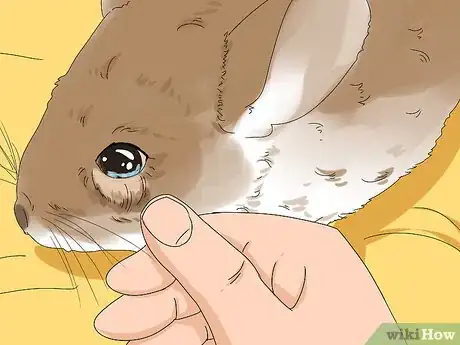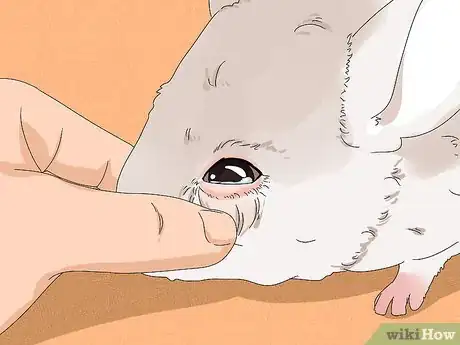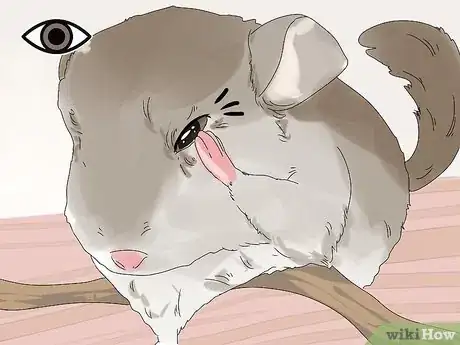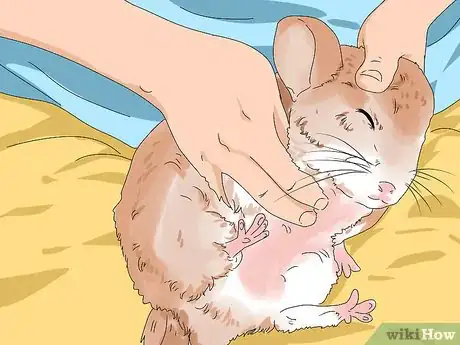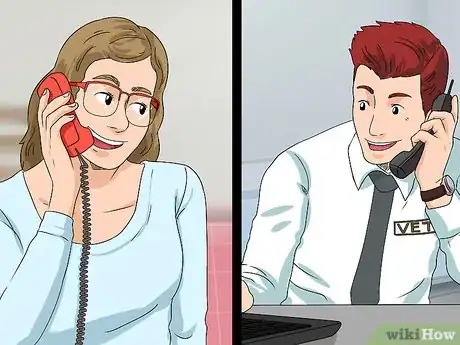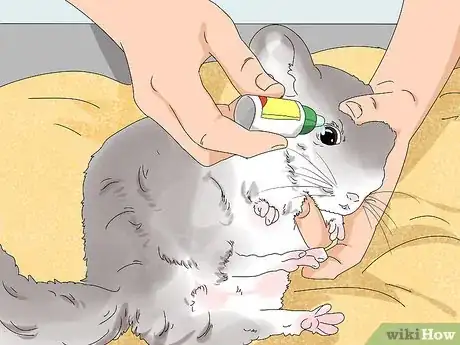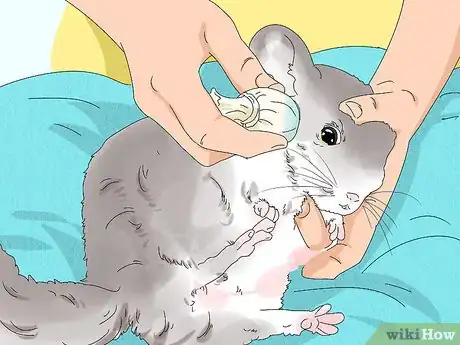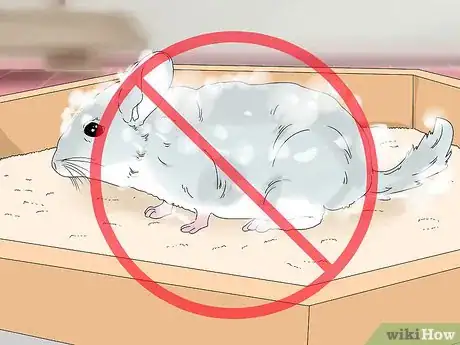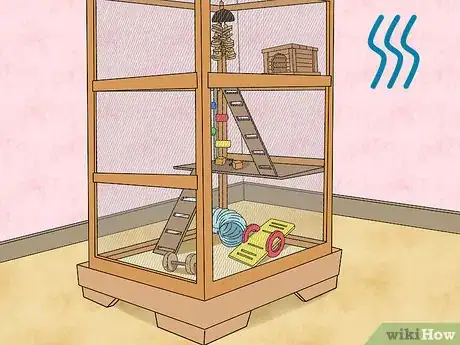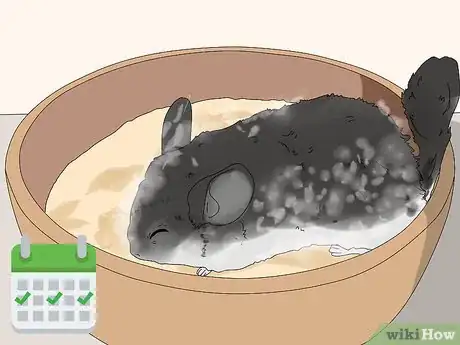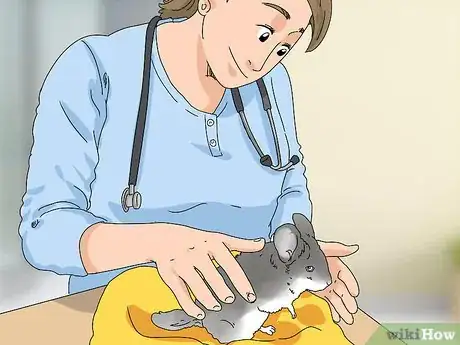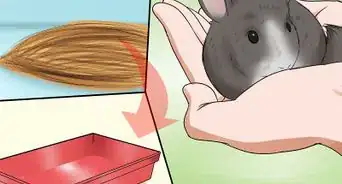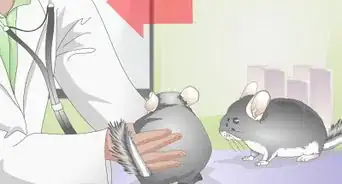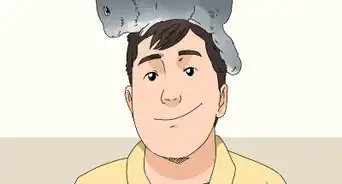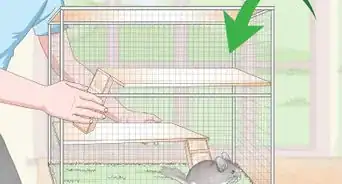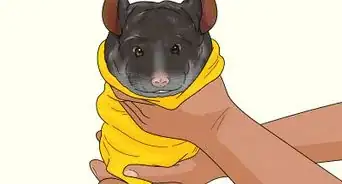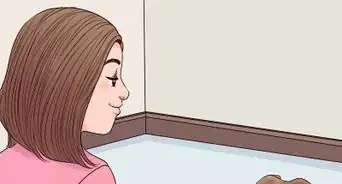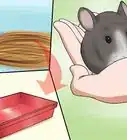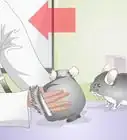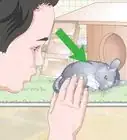This article was co-authored by Pippa Elliott, MRCVS. Dr. Elliott, BVMS, MRCVS is a veterinarian with over 30 years of experience in veterinary surgery and companion animal practice. She graduated from the University of Glasgow in 1987 with a degree in veterinary medicine and surgery. She has worked at the same animal clinic in her hometown for over 20 years.
There are 7 references cited in this article, which can be found at the bottom of the page.
This article has been viewed 41,779 times.
Eye irritations can cause your chinchilla discomfort, but they are easy to treat and prevent. Look for tearing, discharge, redness, or injury to the eye area. Consult your vet and administer whatever treatment they prescribe for your pet. Prevent future eye irritations by keeping your chinchilla's cage clean and dry and monitoring your chinchilla's health.
Steps
Spotting Eye Irritations
-
1Look for watery eyes. Look at your chinchilla's eyes for signs of tearing. Watery eyes can be a sign of irritation, but they can also indicate a cold, infection, or early onset pneumonia. Contact your doctor immediately if your chinchilla is running a fever or demonstrates other serious symptoms of illness (e.g., lethargy).
- If there is a thicker discharge coming from your chinchilla’s eyes, it may be a sign of an upper respiratory infection or tooth problems, especially if the discharge is yellow or green.
-
2Check for matted fur around the eyes. A healthy chinchilla should have clean, dry eyes. Check your pet’s eyes every day to make sure that they are in good condition. Matted fur around the eyes can signify that they have been watering, producing discharge, or simply causing your chinchilla enough discomfort for it to rub and scratch them.Advertisement
-
3Spot pink, irritated skin under the eyes. Fungal infections are common in chinchillas and usually affect their eyes, nose, and genitals. Look for a loss of fur under the eyes that reveals pink, irritated skin. Contact your vet immediately, as an anti-fungal powder will be necessary to treat the fungus.[1]
-
4Observe your chinchilla’s behaviour. Observe your chinchilla’s behaviour throughout the day to see if it shows signs of discomfort. Pawing at its eyes repeatedly is a definite indication of an eye problem. You should also note if your chinchilla is squinting or holding one eye shut, which will be easier to recognize as you observe it for an extended period of time.[2]
-
5Look for signs of injury. Because of their dense fur, it can be difficult to spot an injury on a chinchilla. Pick up your chinchilla so that you can examine its eyes closely and look for skin wounds, swelling, or the presence of foreign material around its eyes (e.g., a wood splinter.) Injury to the area may cause irritation and discomfort to its eye area.[3]
- Injury can occur from an accident due to an object in your chinchilla’s habitat, or from a fight with another chinchilla or household pet. Try to deduce the cause of your chinchilla’s injury to prevent it in the future.
- Visit your vet to avoid an infection and to ensure that the injury is treated properly.
Treating Eye Irritations
-
1Consult your veterinarian. If your chinchilla shows signs of eye irritation, contact your veterinarian immediately to rule out serious medical issues (e.g., a respiratory infection or serious injury.) Your vet will be able to diagnose the issue by doing a physical examination of your pet, and by testing its blood or eye discharge if necessary. They may prescribe a topical ointment, drops, or powder for your chinchilla, or prescribe antibiotics to treat an infection.
-
2Administer eye drops. With one hand, brace your chinchilla’s head and neck firmly but gently. Use your thumb to gently secure your pet’s eyelid, holding the eye open. Quickly squeeze the drops into your pet’s eye, then repeat with the other eye if needed.[4]
- Be sure to follow your veterinarian's instructions carefully when administering the treatment.
- If you have to apply eye ointment to your chinchilla's eye area, brace its head the same way and dab on the ointment as instructed by your veterinarian.
- Comfort your pet and give it a treat afterwards to prevent negative associations with the experience, which you will likely have to repeat once or twice a day while treating the irritation.
-
3Give your chinchilla medicine. Brace your chinchilla’s head and neck and place the syringe or eyedropper you are using to administer medicine just behind your pet’s front teeth. Slowly administer the medication into its mouth. Your chinchilla will likely chew on the syringe or eyedropper while you do this, which will keep its mouth open and allow you to give it the medicine. [5]
- If your chinchilla was prescribed tablet medication, crush it and mix it with a small amount of a liquid dietary supplement (like Ensure). Administer it the same way you would administer liquid medication.
-
4Apply a warm compress to remove eye crust. Tearing and eye discharge will produce an uncomfortable crust around your chinchilla’s eyes. Wet a clean cloth with warm water and very gently dab away this buildup from the eye area. Gently brace your chinchilla’s head with your other hand while you do this to hold it steady.[6]
-
5Do not give your chinchilla a dust bath until the irritation clears. While your chinchilla’s eyes are healing, avoid giving it a dust bath. The dust could cause further irritation to your pet’s hypersensitive eyes, especially if it clings to moisture or discharge around the eye area. Wait until your chinchilla’s eyes look clean, dry, and clear, or ask your vet for advice about how long to wait before giving your chinchilla another bath.
Preventing Eye Irritations
-
1Clean and disinfect your chinchilla’s cage. To prevent the spread of fungus spores and bacteria, disinfect your chinchilla’s cage. Purchase a pet-safe disinfectant from a pet store or online to ensure that you do not cause your chinchilla any harm. Wipe down the cage from top to bottom with the cleaner and rinse it thoroughly.[7]
- Allow the cage to dry completely before placing anything inside of it.
- Disinfect your chinchilla’s cage at least once a week to keep it clean.
-
2Keep your chinchilla’s cage dry. Chinchilla’s have thick coats of fur that should not get wet, as they do not dry easily. Moisture can cause the growth of fungus on your pet’s skin and fur, which may lead to eye irritation. Change the bedding in its cage every day or two to ensure that it is dry and prevent fungus.
-
3Give your chinchilla regular dust baths. Chinchillas keep clean by bathing vigorously in dust, which removes oil and dirt from their fur. Purchase a dust bath kit from a pet store or online to make sure that you provide your pet with the right kind of dust. Providing your chinchilla with another kind of dust to bathe in is likely to result in an eye irritation or infection.
- Give your chinchilla a dust bath every two or three days. Place the container in its cage for ten to twenty minutes, then remove it. Monitor the bath to prevent your chinchilla from tipping the container over or spreading dust to the rest of its cage.
- The container for the dust bath should be large enough for your chinchilla to move around in and shake off excess dust, and heavy enough that it is difficult to tip over.
-
4Bring your chinchilla for regular veterinary checkups. Bring your chinchilla for a full veterinary checkup at least once a year to ensure its health. A vet will be able to diagnose medical conditions that may contribute to eye irritations (e.g., pneumonia) and offer advice for keeping your pet healthy. Your pet's yearly checkup should also include a dental exam, which will reveal any tooth problems that might cause eye irritations.[8]
References
- ↑ http://www.cheekychinchillas.com/health.html
- ↑ https://infolific.com/pets/chinchillas/eyes-ears-nose-and-mouth/
- ↑ https://vcahospitals.com/know-your-pet/chinchillas-diseases
- ↑ http://www.petplace.com/article/small-mammals/general/nursing-care-for-sick-pets/how-to-medicate-your-chinchilla
- ↑ http://www.petplace.com/article/small-mammals/general/nursing-care-for-sick-pets/how-to-medicate-your-chinchilla
- ↑ http://www.petmd.com/exotic/conditions/respiratory/c_ex_ch_upper_respiratory_tract_infection?page=2
- ↑ http://burgesspetcare.com/chinchillas/caring-for-your-chinchilla/
- ↑ https://www.texvetpets.org/article/chinchillas/
About This Article
If you're not sure if your chinchilla has irritated eyes, look for common symptoms, like watery eyes, pink and irritated skin under the eyes, matted fur around the eyes, squinting, or holding one eye shut. Then, if you think your chinchilla's eyes are irritated, take it to see a vet so they can diagnose the problem and prescribe medication. The vet might prescribe a topical ointment, eye drops, or powder to treat your chinchilla's eye problems. Additionally, if there's an infection, they'll likely prescribe antibiotics. In addition to giving your chinchilla the medication the vet prescribes, you should avoid giving it a dust bath until it's feeling better, since the dust could cause further irritation. For advice on how to prevent eye infections from our Veterinary co-author, scroll down!
